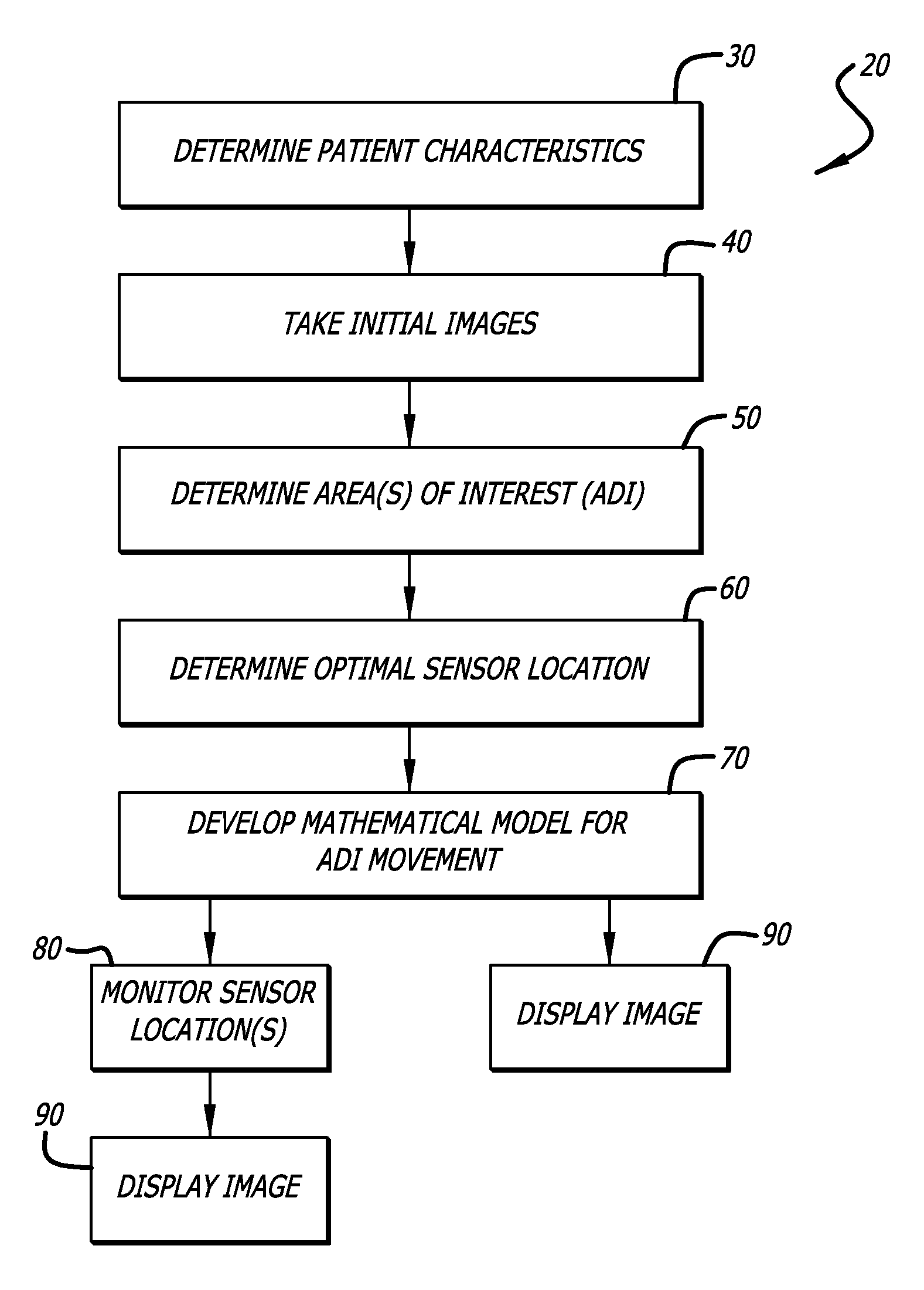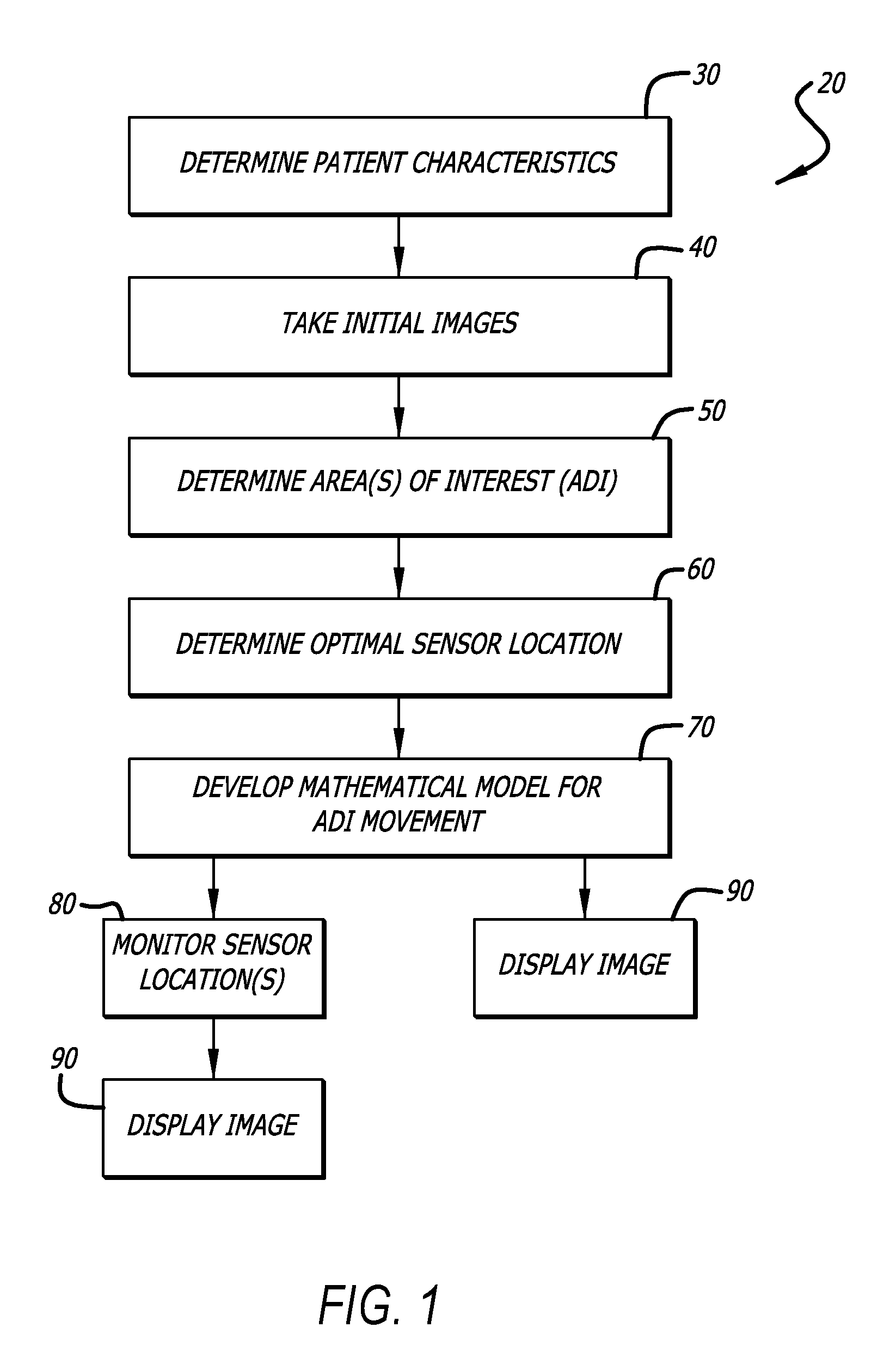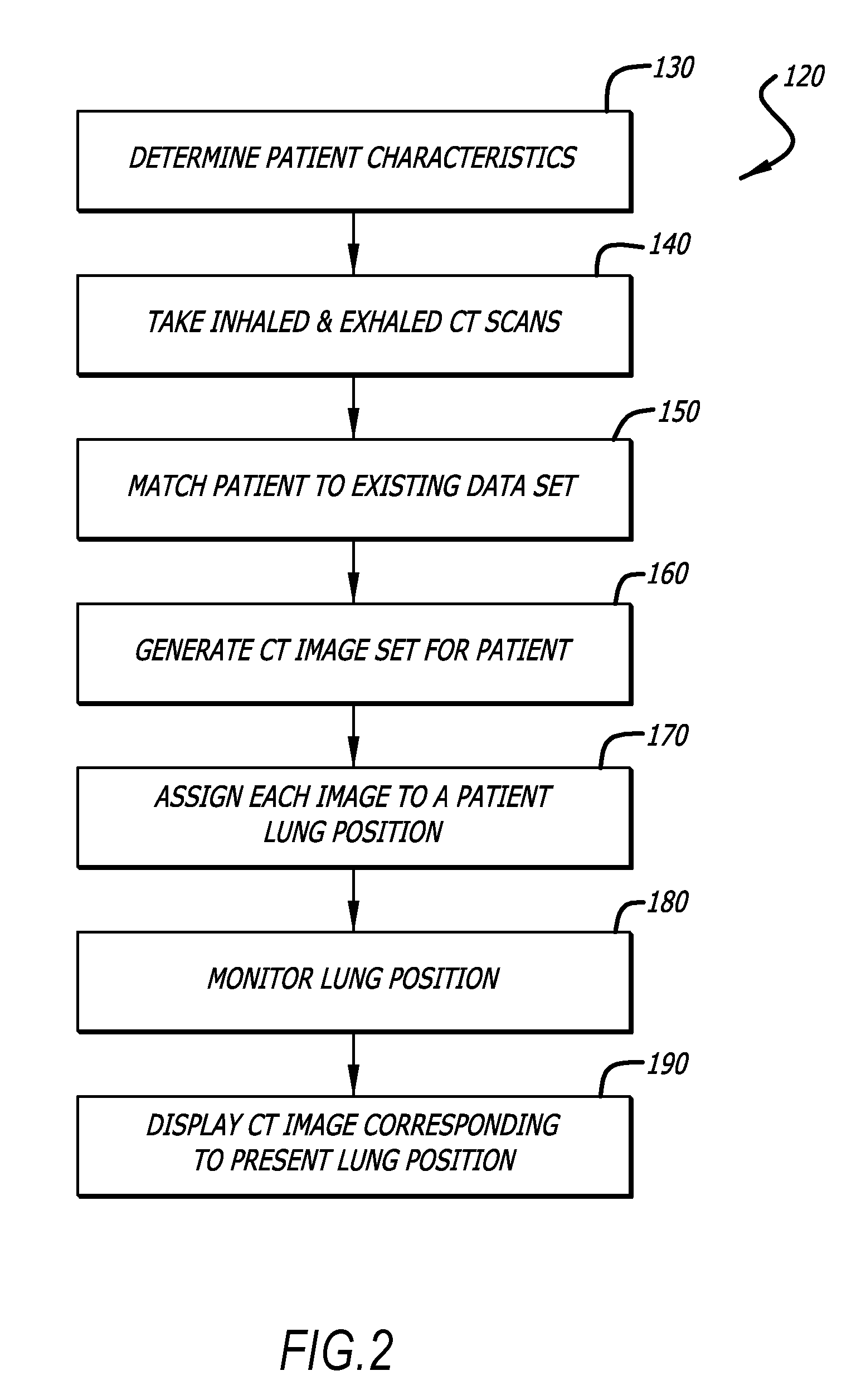Patient Breathing Modeling
a breathing modeling and patient technology, applied in the field of patient breathing modeling, can solve the problems of pet requiring prolonged exposure to radioactive imaging agents, cost and exposure, and not necessarily improving the accuracy of real-time data being displayed, and achieve the effect of accurate representation
- Summary
- Abstract
- Description
- Claims
- Application Information
AI Technical Summary
Benefits of technology
Problems solved by technology
Method used
Image
Examples
example 1
[0029]If multiple CT scans were acquired at 40, the data acquired at 80 may be used to determine which CT scan most accurately depicts the configuration of the lungs and can thus be superimposed onto the LG display.
example 2
[0030]The measured location of the LG can be corrected using the data acquired at 80. Rather than displaying the real-time data acquired by the LG system, which represents the position of the LG in relation to a magnetic field filling the AOI, the real-time data is manipulated so the LG appears in the correct location on the CT scan, which may be static or dynamic. In this way the tool may be localized more correctly inside the CT volume. The geometric model derived from the CT volume can thus be more accurately represented relative to the tool inside the body.
example 3
[0031]Using a well-known technique called image warping, the CT Volume can be changed dynamically using the data acquired at 80 and according to the monitored phase of breathing cycle. This can be used to display augmented images to perform the simulation of dynamic X-Ray modalities such as fluoroscopy, dynamic CT, etc., to simulate the patient physiology synchronized to the actual patient, study the tissue movement relative to the inserted tools, and for other purposes as well.
[0032]Referring now to FIG. 2, there is shown a flowchart that illustrates another embodiment 120 of the method of the present invention.
[0033]At 130 the patient characteristics are measured or determined. “Patient characteristics” is a term defined herein as any attribute of the patient that will influence the position of his or her lungs during any given point in the breathing cycle. Patient characteristics include, but are not limited to patient size (lung size), lung shape, lung health, altitude, patient ...
PUM
 Login to View More
Login to View More Abstract
Description
Claims
Application Information
 Login to View More
Login to View More - R&D
- Intellectual Property
- Life Sciences
- Materials
- Tech Scout
- Unparalleled Data Quality
- Higher Quality Content
- 60% Fewer Hallucinations
Browse by: Latest US Patents, China's latest patents, Technical Efficacy Thesaurus, Application Domain, Technology Topic, Popular Technical Reports.
© 2025 PatSnap. All rights reserved.Legal|Privacy policy|Modern Slavery Act Transparency Statement|Sitemap|About US| Contact US: help@patsnap.com



